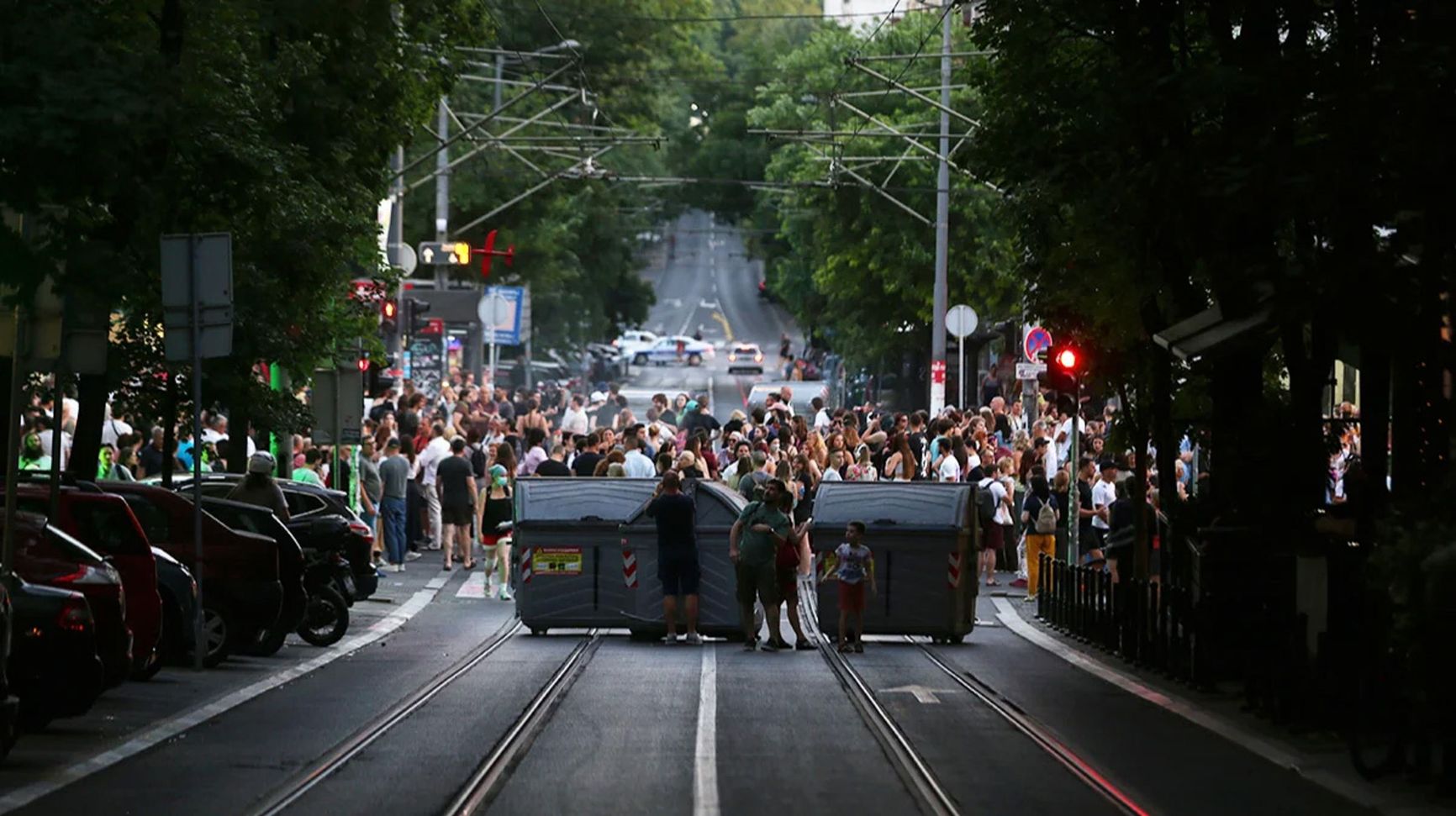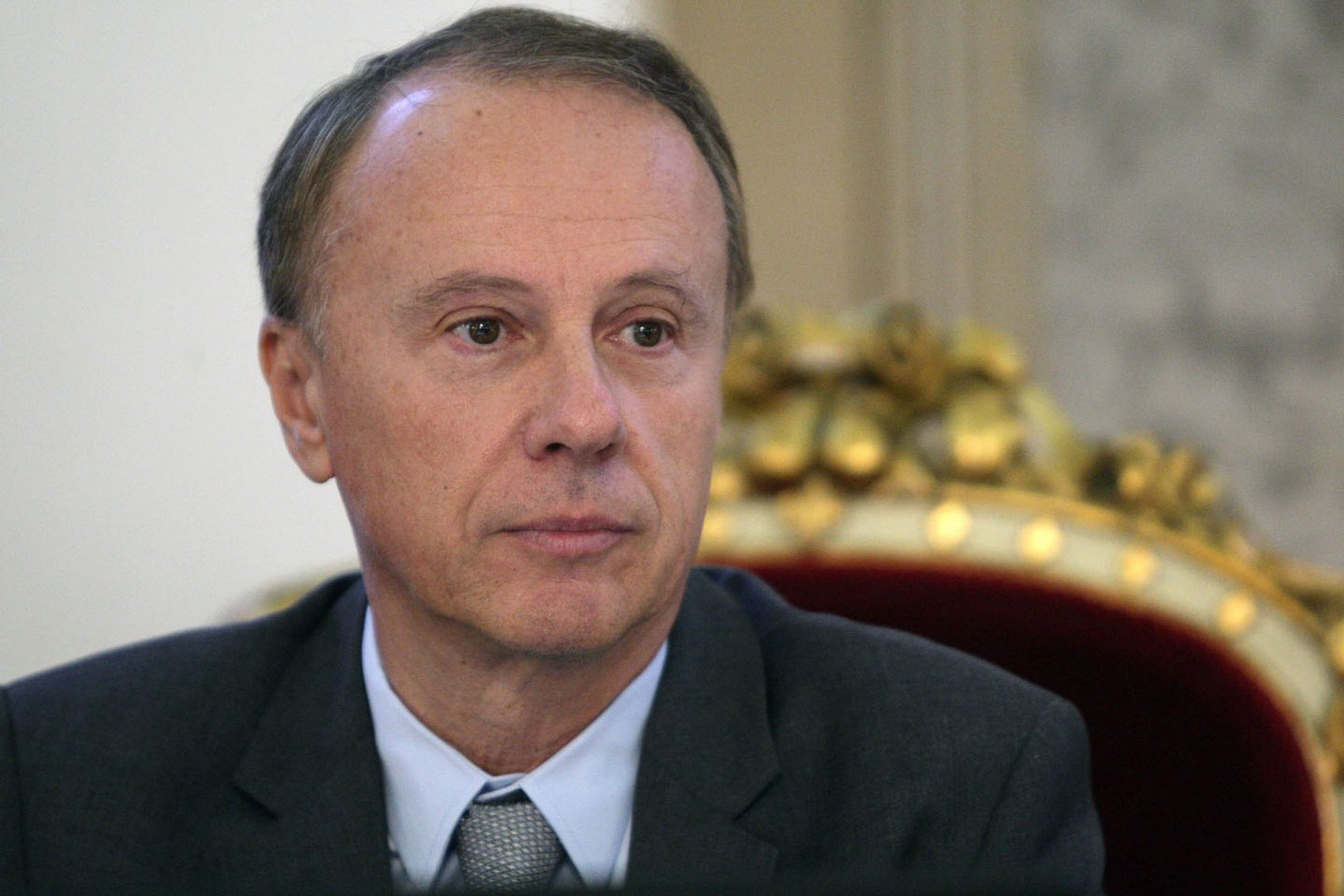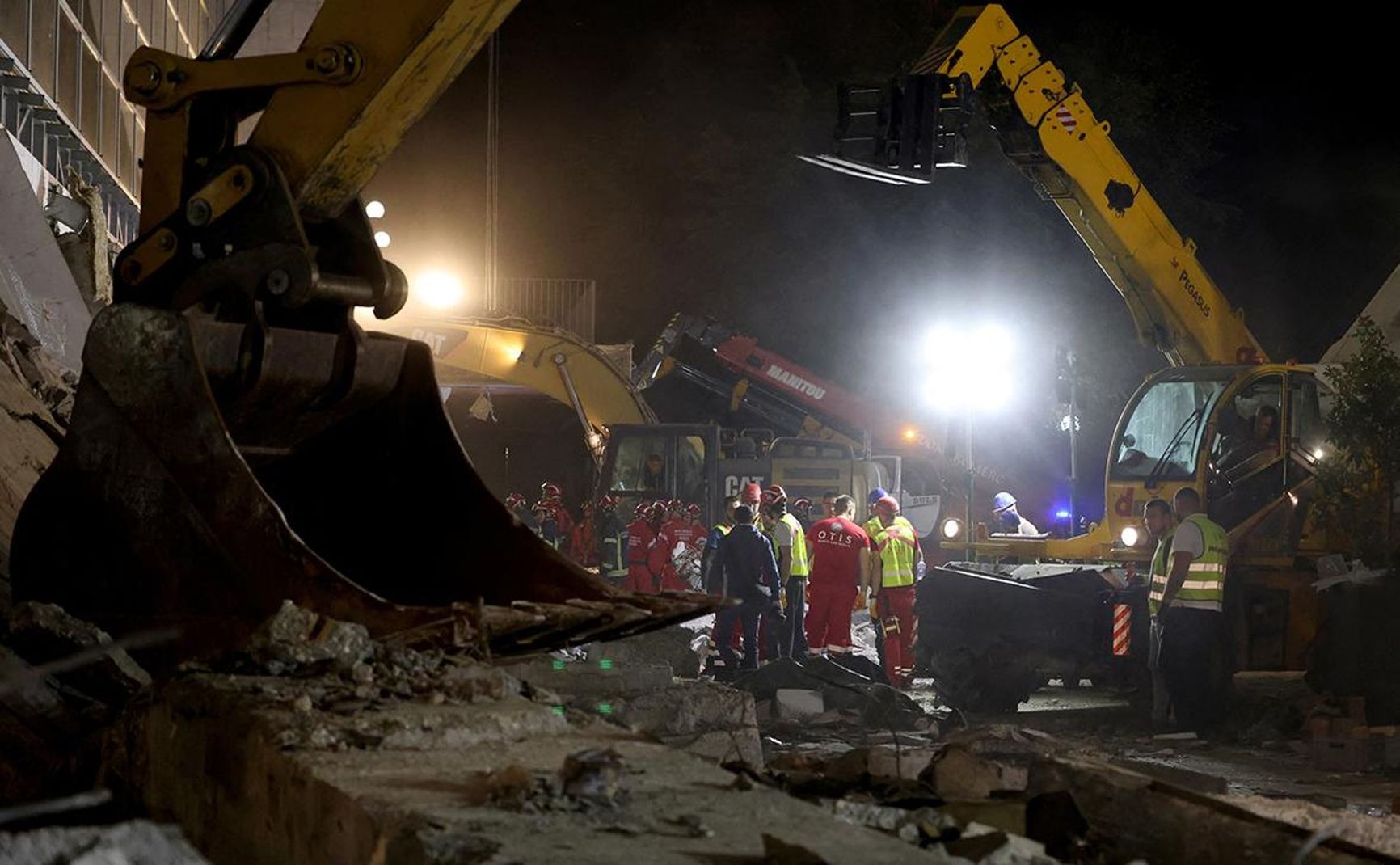

Since early July, a campaign of civil disobedience and a “total blockade of the country” has been underway across Serbia, led primarily by students. The protests, which began in November 2024 after 16 people were killed at a railway station in the city of Novi Sad, have become the most serious challenge yet to President Aleksandar Vučić. Police are detaining more than a hundred activists a day, but they have failed to suppress the demonstrations, which are being held under slogans that call for early elections and an end to corruption. Some protesters have been hospitalized with broken bones, and many of those detained are minors. Vučić has ignored calls to investigate police violence, instead accusing his opponents of “terrorism” and “undermining the constitutional order.” Experts say ending Vučić’s 13-year rule won’t be easy. Unlike in the year 2000, when the regime of Slobodan Milošević collapsed in the face of nationwide opposition, Vučić appears resilient. But on the other side, the students still show no signs of backing down.
Content
The opposition changes tactics
The toughest test yet
How it all began
Corruption charges
How resilient is the Vuсiс regime?
The biggest mistake of the 2000s
The opposition changes tactics
Following a harsh police crackdown and mass arrests in Belgrade and other cities on the night of July 3, students launched a campaign of civil disobedience and a “total blockade of the country.” Their main tactic is “mobile blockades” — shutting down roads by erecting barricades using trash bins and metal fences. The protesters move quickly: while police tear down barricades and arrest activists in one spot, new ones are already being set up a few hundred meters away.

Protesters erect barricades on the roads Andrej Cukic / EPA
The protests, of varying intensity, have spread to all major cities: Belgrade, Novi Sad, Niš, Čačak, Užice, Vranje, Smederevo, Kragujevac, Šabac, Zaječar, Kruševac, Pančevo, Valjevo. In recent days, clashes and arrests have continued. The demonstrations take many forms. In some places, protesters build solid barricades; in others, they simply walk back and forth inside crosswalks or spray water from toy guns — mocking the supposed “terrorist threat” for the benefit of TV cameras.
The students have taken a creative approach. In Sremska Mitrovica, 75 kilometers from Belgrade, a Sunday beach gathering was marked by whistles, clouds of yellow and blue smoke, and a boat bearing the slogan “Enough lies!” Organizers announce each action in advance on social media, often giving them playful names like “passive-aggressive little blockade.” The police, however, are not amused: despite temperatures nearing 40℃ (104℉), they are forced to work in full gear with their faces covered.
In a pointed move against the protesters, Vučić recently pardoned four members of the ruling Serbian Progressive Party (SNS), who had faced criminal charges for assaulting students with baseball bats in Novi Sad on the night of January 27–28. Critics of the government called the decision “an attempt to provoke civil war” and “a direct signal to thugs to attack anyone who thinks and speaks freely.”
Belgrade resident Ilija, who was actively involved in the protests of the 1990s and 2000s, shared his impressions with The Insider:
“Many Serbs are fed up with Vučić and his behavior. It’s not even about what he says or does — it’s how he does it. His endless addresses to the nation about yet another ‘crucial issue’ drive people mad. I remember the Milošević era well, and despite all the problems of those years, at least he had some charisma. Vučić has none. He’s taken total control, even though, according to the constitution, the president’s role is purely ceremonial.
Vučić was clearly stunned by the scale of the protests — he’s lost his compass, as we say. He accused the students of terrorism and said he plans to write a book about how he defeated a ‘color revolution!’ On social media, people are now joking that he should write a bestseller titled How the Students Had Me from St. Demetrius Day to St. Vitus Day [St. Demetrius Day is November 8, St. Vitus Day is June 28].”
The toughest test yet
Analysts of Serbian politics are discussing a range of possible outcomes — from suppressing the protests and ramping up repression to the organization of early elections featuring candidates backed by the demonstrators. However, many point out that early elections, a tactic Vučić has used repeatedly in the past to reaffirm his dominance and crush opposition, are not in his interest this time.
Political scientist Igor Novaković, research director at the Center for International and Security Affairs, told The Insider that the current movement is “the most serious challenge to Aleksandar Vučić’s hold on power. The protests have lasted more than eight months now, and there’s no sign of them weakening — unlike most protest waves, which usually fade after a few months.”
The protesters’ main demands boil down to upholding the rule of law and holding early elections, though it remains unclear whether such elections will take place. “Vučić is now saying there won’t be any elections until the end of 2026, by which time preparations for the Expo 2027 world exhibition are expected to be complete,” Novaković explains. “Meanwhile, the situation is so unstable — and the protest so decentralized — that it’s impossible to make any predictions about timing.”
So far, the protesters have not presented their own list of candidates for future elections, but several opposition parties have already voiced full support for the student movement. Among those being mentioned as a potential head of a “protest slate,” Novaković says, is the rector of the University of Belgrade, Vladan Đokić.

Vladan Đokić
Vladan Đokić was among the speakers at a mass rally on Slavia Square in Belgrade on June 28. He is one of the members of the academic community who supported the student blockades from the beginning. In mid-April, Đokić was summoned by police for questioning in a case involving alleged abuse of office. At the end of June, Vučić accused the rector of “terrorism” and “attempting to destroy the state.” Some of the president’s allies have openly called for Đokić’s arrest.
How it all began
The mass protests kicked off after the collapse of a canopy at the Novi Sad railway station on November 1, which killed 16 people. Many linked the tragedy to widespread corruption, as the station had only recently undergone reconstruction.
The renovation lasted three years, and the station was officially opened twice. In March 2022, Hungarian Prime Minister Viktor Orbán was invited to a ceremony, even though the project was not yet complete. The second opening took place in July 2024 — just four months before the canopy collapse. Officially, the work was said to have been carried out “according to European standards,” with the project implemented by a consortium of Chinese companies.
The station’s renovation lasted three years, with two separate opening ceremonies
At first, authorities claimed the reconstruction had not included work on the canopy. However, photographs and documents analyzed by experts disproved these statements. Some construction continued right up until the day of the tragedy. A report from September 2024 noted, among other things, the urgent need to “significantly increase” the number of workers in order to fix defects and unfinished elements.

The canopy collapse at Novi Sad station sparked mass protests
Zorana Jevtic / Reuters
In late 2024, prosecutors charged 13 people with crimes against public safety. Among those indicted were former Minister of Construction, Transport, and Infrastructure Goran Vesić and his aide Anita Dimoski, as well as Jelena Tanasković, the former head of the state-owned company Serbian Railway Infrastructure. Several other figures connected to the company were subsequently arrested on suspicion of corruption. On January 28, 2025, Prime Minister Miloš Vučević resigned.
Corruption charges
Although arrests and prosecutions for abuse of office in Serbia have increased in recent years, convictions remain rare. The government is frequently criticized for a lack of transparency in public tenders and in the execution of infrastructure and industrial projects. Opponents accuse Vučić and his administration of systemic corruption and ties to organized crime. Some of the regime’s most prominent figures have been linked to such allegations, including Finance Minister Siniša Mali, former Health Minister Zlatibor Lončar, Minister without Portfolio Nenad Popović, and former Deputy Prime Minister Aleksandar Vulin.
Handing out lucrative positions to allies of the president and the ruling party is seen as business as usual. Just recently, Vučić openly boasted about getting someone a job at a state company with a salary of five thousand euros a month — and expressed surprise when he saw that same person among the protesters.
Vučić openly bragged about landing someone a €5,000-a-month state job
While some wondered why Vučić would make such a self-incriminating admission, others saw it as a sign that people may be starting to abandon a sinking ship.
How resilient is the Vuсiс regime?
Experts say it’s still too early to assume that Vučić will lose this battle. Bojan Klačar, executive director of the Center for Free Elections and Democracy (CESID), shared his perspective with The Insider:
“There’s clearly public dissatisfaction with the government, especially in major cities like Belgrade and Novi Sad. At the same time, Vučić still enjoys strong support from the most disciplined segments of the electorate — pensioners and rural voters. He also relies on a solid party infrastructure.”
The student movement has become a political actor in its own right and is now more openly engaged in civil disobedience. However, the pressure has yet to reach the mainstream and is not strong enough to force the authorities to make concessions. For now, the students remain more focused on protest than on political organizing.
“Vučić would prefer to hold elections in late 2026 or early 2027, and he has his reasons — completing the Expo project and consolidating power. It’s possible the vote could be scheduled earlier, but only if the crisis deescalates,” Klačar says.
As for the previous elections, which were held in April 2022, domestic and international observers alike reported widespread violations and unfair advantages for Vučić and his SNS party. These included disproportionate access to media, misuse of government resources for political gain, and pressure on civil servants and low-income voters.
Many observers believe the opposition has little real chance to broaden its support. Vučić’s regime uses a range of tactics to undermine its opponents’ electoral prospects — manipulating election dates, exerting its influence over nominally independent institutions, and busing in voters from neighboring countries or districts.
In addition to state-owned media, the regime controls numerous private outlets, using them to discredit its detractors. Intimidation and violence have also contributed to the weakening of opposition representation at all levels of government.
The biggest mistake of the 2000s
Nenad Čanak, one of the leaders of the democratic opposition that ended Slobodan Milošević’s rule back in 2000, told The Insider that the transformation of power in Serbia since then increasingly reminds him of the authoritarian regimes in Russia and Belarus. According to Čanak, who headed Serbia’s League of Social Democrats of Vojvodina from 1990 up until 2022:
“As the protest movement grows, Vučić has revealed his true face: the constitution is trampled on, laws are ignored, and the police crack down on demonstrators using methods typical of fascist regimes. A state that acts this way shows it has no interest in aligning with the European Union or the civilized world — it is copying the dictatorships of Russia and Belarus. This is bound to provoke mass resistance, because the authorities are beating children and breaking their bones.
It all started with negligence and corruption. The reconstruction of the railway station was carried out unprofessionally, which led to the deaths of innocent people. The former construction minister hasn’t been seen in public since. According to some reports, he fled to Italy, where he bought a villa. And that’s exactly what will happen with the entire ruling elite: they will flee the country with stolen billions, leaving Serbia deeply divided. The final major theft they’re attempting is Expo 2027. Cost estimates for the project go as high as €17 billion — while the Paris Olympics cost just €8 billion.”
Čanak notes that, unlike Slobodan Milošević, Vučić is not waging wars. However, Serbia today has no real opposition and no independent media left, save for one small television channel. Because the country never went through a lustration process, many figures from the Milošević era remain in power. Čanak calls this one of the greatest mistakes of the 2000s:
“Today we’re seeing the same faces as under Milošević. The current interior minister, Ivica Dačić, was the spokesperson for Milošević’s Socialist Party, and Vučić was the secretary general of the ultranationalist Radical Party led by Vojislav Šešelj, who was convicted of war crimes in The Hague. So 25 years after Milošević’s fall, we’re still being ruled by the same team — people who should never have been allowed anywhere near politics. The country is now on the brink of explosion.
The worst outcomes could still be avoided through a peaceful transfer of power and a partial defection of police forces to the side of the protesters. That may not seem realistic now, but if authority eventually does change hands, lustration must be the top priority — otherwise, only the color of the baton used to beat people will change.”